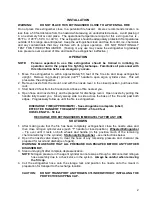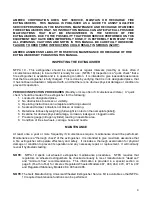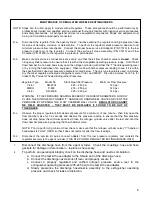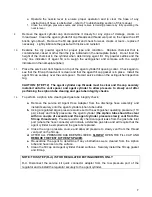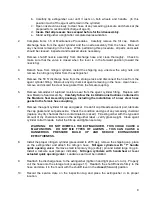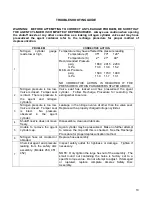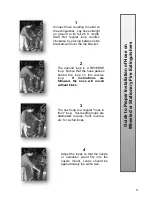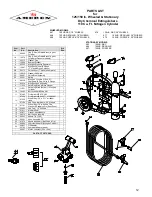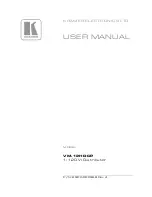
3
VENTING DEVICE
(
Standard
on all Stationary Extinguishers,
Optional
on Wheeled Extinguishers)
A venting device has been installed on all stationary extinguishers to provide a means of safely
and easily relieving residual argon pressure from the agent cylinder while utilizing the same
pressure to evacuate or "blow down" the hose.
See Below:
Figure 1 – Models 484, 485 & 486 (Tall Units – 110 cu. ft. Nitrogen Cylinder)
Figure 2 – Models 481, 482 & 483 (Short Units – 23 cu. ft. Nitrogen Cylinder)
OPERATION
– After the fire has been successfully extinguished and it has been
determined that it is completely out:
1. Confirm that the nozzle lever is in the CLOSED position.
2. Close the argon valve (move "T" handle to CLOSED position)
3. Remove ring pin and CLOSE agent cylinder valve (Valve A in Fig. 1) to prevent further
chemical from entering the hose.
4. Remove ring pin and OPEN pressure vent valve (Valve B in Fig. 1) to allow argon gas to
by-pass the chemical and pressurize the hose.
5. Open discharge nozzle to vent all residual chemical and nitrogen gas pressure.
6. Re-open nitrogen valve if additional pressure is required.
7. When recharging this unit, reset agent cylinder and vent valves, install ring pins and
lockwire seals.
CAUTION: VALVE SHUT-OFF HANDLES MUST BE IN
THE POSITIONS SHOWN WHEN EXTINGUISHER IS
ON STANDBY OR IN ACTUAL OPERATION
.
Figure 1
Figure 2



